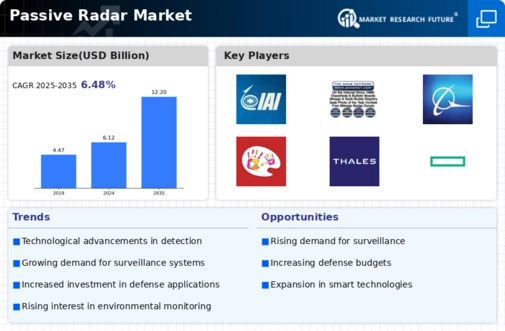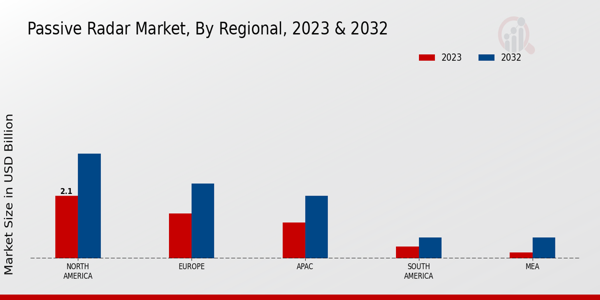The Passive Radar Market has been witnessing significant growth and evolving competition due to the increasing demand for advanced surveillance systems that ensure security and situational awareness across various sectors.
As nations focus on enhancing their defense capabilities amid rising geopolitical tensions, the market is characterized by robust technological advancements and an influx of innovative solutions.
The competition within this sector is driven by the need for more sophisticated detection and tracking systems that can operate in a passive manner, leveraging existing signals to identify threats without emissions that could reveal their location.
This has led to a diverse array of companies striving to carve out their market share, each aiming to leverage their unique technological strengths, establish strategic partnerships, and expand their global reach.
Israel Aerospace Industries, a key player in the Passive Radar Market, has established a strong market presence through its cutting-edge capabilities in developing and deploying passive radar solutions.
The company's strengths lie in its extensive experience in aerospace and defense technology, enabling it to deliver highly effective surveillance systems that are critical for national security.
Israel Aerospace Industries has cultivated a reputation for innovation, which is evidenced by its investment in research and development to create advanced passive radar technologies that meet and exceed operational requirements.
Their systems are designed for versatility and adaptability, allowing for seamless integration with existing defense infrastructures. Moreover, the company's strong relationships with governmental and military sectors enhance its competitive edge, ensuring ongoing contracts and collaborations that further solidify its position in the market.
SAAB has also emerged as a prominent figure in the Passive Radar Market, known for its innovative approach to defense and security solutions. The company's strengths are reflected in its commitment to developing passive radar systems that offer enhanced surveillance capabilities while remaining discreet.
SAAB's advanced radar technologies leverage sophisticated algorithms and signal processing techniques to provide accurate tracking and detection, contributing to improved situational awareness for military and civilian applications.
In addition, SAAB's emphasis on collaboration and partnerships with other defense industry stakeholders allows it to enhance its product offerings and reach a broader market.
With a strategic focus on integrating passive radar systems into comprehensive defense solutions, SAAB positions itself as a leader in this niche market, drawing on its heritage of engineering excellence and reliable performance to further its competitive advantage.














